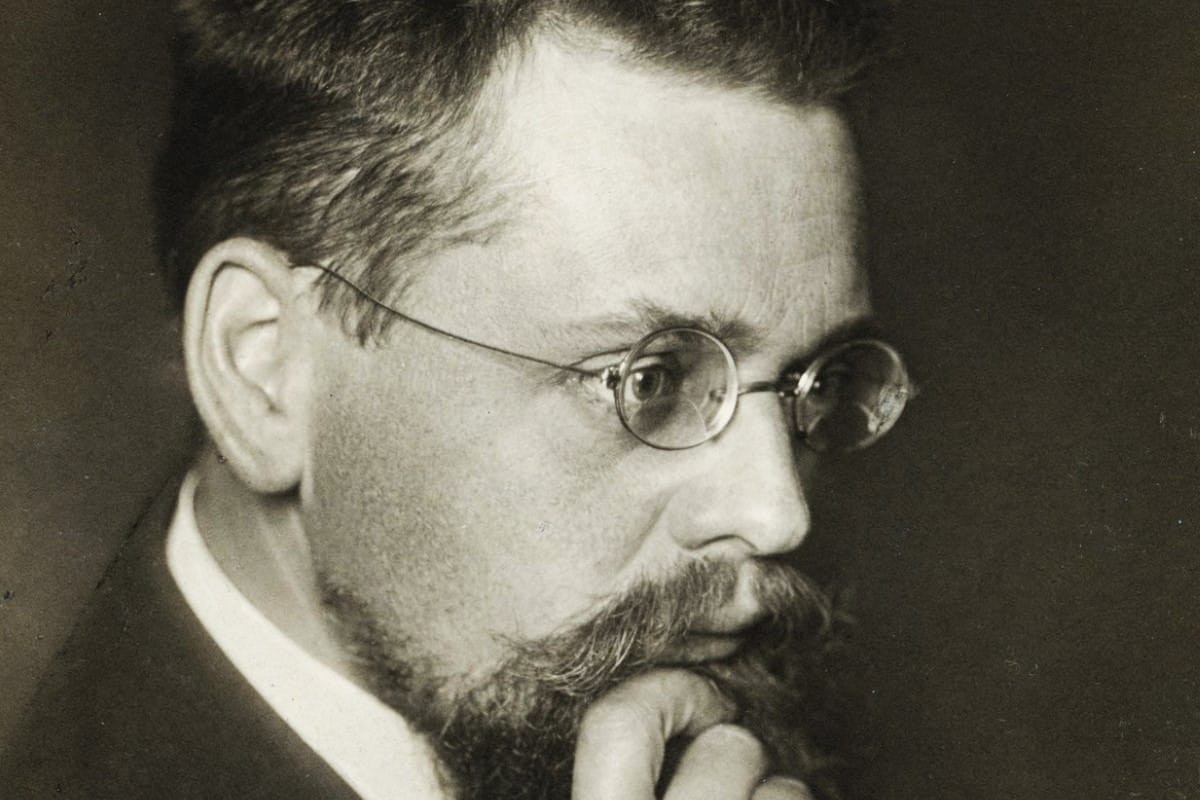Get ready to enter the fascinating world of Ernst Mach! This genius rocked the scientific and philosophical realms by challenging conventional wisdom about space, time, and how we perceive reality. Brace yourselves for some mind-blowing facts about the man behind Mach speed and discover how his ideas laid the foundation for the physics we know today. Hold on tight, folks; this is one wild ride into the depths of scientific thought!
Captivating Facts About Ernst Mach
Ernst Mach wasn’t just a scientist; he was a revolutionary thinker whose ideas rippled across physics, philosophy, and even our everyday understanding of the world. Let’s dive into some captivating facts about the man who redefined inertia and left an indelible mark on the landscape of modern science.
Shaking Up Inertia: A New Perspective
Imagine you’re in a car that suddenly hits the brakes. You jolt forward, right? We’ve all felt that tug, which we call inertia—the tendency to resist changes in motion. But Ernst Mach dared to question its very nature. He proposed a radical idea: what if inertia wasn’t just an inherent property of objects, but rather a result of their interaction with all the other stuff in the universe?
This groundbreaking concept, known as Mach’s Principle, challenged the established Newtonian view and laid the foundation for Einstein’s theory of general relativity. Some experts believe that this principle suggests a deeper connection between the largest and smallest scales of the universe. Talk about a mind-bending contribution!
From Sound to Supersonic: Unveiling the Doppler Effect and Shock Waves
Ever noticed how a siren’s pitch changes as it approaches and then speeds away? Or how a sonic boom makes the ground tremble when a jet breaks the sound barrier? These fascinating phenomena are linked by something called the Doppler effect and the formation of shock waves—and Ernst Mach was instrumental in bringing them to light. His meticulous experiments with supersonic projectiles and sound waves not only advanced our understanding of these concepts but also proved crucial for the development of aviation.
Beyond the Physical: Exploring the Mind and Perception
Mach’s influence wasn’t confined to the realm of physics. He delved into philosophy, questioning the nature of space, time, and even how we perceive the world around us. He argued that our understanding of reality stems solely from sensory experiences, an idea that greatly influenced the development of logical positivism, a philosophical movement that emphasized empirical evidence.
But it’s not just abstract philosophical ideas that Mach is known for. Have you ever noticed a strange optical illusion where a light band appears brighter next to a darker band, even though both bands have uniform brightness? This intriguing phenomenon, known as Mach bands, highlights how our visual system interprets contrasts and continues to challenge conventional theories of perception.
A Legacy of Mentorship and Enduring Inspiration
Ernst Mach’s impact extends far beyond his own groundbreaking work. He was a respected mentor and influenced some of the greatest minds of his time, including physicist Ludwig Boltzmann, known for his work on statistical mechanics, and Sigmund Freud, the father of psychoanalysis.
His prolific writings, particularly his masterpiece “The Science of Mechanics” and the insightful “The Analysis of Sensations,” continue to captivate readers with their clarity and thought-provoking ideas. These works are not mere relics of the past; they remain sources of inspiration for scientists, philosophers, and anyone curious about the nature of reality.
Exploring Uncharted Territory: Mach’s Unfinished Symphony
Perhaps one of the most tantalizing aspects of Mach’s legacy lies in the unexplored potential of his ideas. His work, especially his thoughts on the implications of Mach’s principle for cosmology and the expanding universe, offers a rich tapestry of possibilities that continue to intrigue physicists today.
But it doesn’t stop there. Imagine the potential applications of Mach’s ideas in fields like cognitive science, where his insights on perception could shed light on how our brains process information, or in the development of artificial intelligence, where understanding sensory experience could be key to creating truly intelligent machines.
Ernst Mach’s journey was one of relentless curiosity, a testament to the power of challenging established norms and venturing beyond the confines of conventional thinking. His groundbreaking work not only shaped our understanding of the physical world but also opened up new avenues of inquiry that continue to inspire and challenge us to this day.
What are Some Interesting Facts About Ernst Mach?
Ernst Mach wasn’t content with revolutionizing just one field! This guy’s work on the Doppler effect and shock waves totally changed how we see the universe and made modern aviation possible. Imagine trying to explain supersonic flight without his research – talk about a headache! But hold on, there’s more!
This wasn’t just a physics fan. Mach was interested in how we perceive the world around us too. His investigations into physical stimuli and their relationship to our senses? Groundbreaking stuff! It basically paved the way for all sorts of advancements in how we understand perception.
And if you thought he’d stop there, think again! Mach was a bit of a rebel. He decided to take on Newton himself, challenging the accepted ideas about space and time. Talk about bold! These critiques weren’t just some academic exercise either; they actually became the foundation for a whole new school of thought – logical positivism.
Even today, Mach’s influence is still felt. It’s not just physics either – psychology, philosophy, you name it, his work has probably had an impact. This is a legacy that just keeps on inspiring scientific breakthroughs and intellectual leaps.
Want to dive a little deeper? Check out these fascinating tidbits:
- Ever heard of ‘Mach’s Principle of Inertia’ or the ‘Mach Band’? These weren’t just brain teasers for this intellectual giant; they actually had a major influence on Einstein’s theory of general relativity and impacted our understanding of visual perception. Talk about leaving your mark!
- Mach wasn’t just a researcher; he was a prolific author and a mentor to many. His ideas spread far and wide, sparking new avenues of thought and continuing to influence scientists and scholars today.
The takeaway? Ernst Mach was a one-of-a-kind thinker. His contributions to physics, psychology, and philosophy are like the gifts that keep on giving, constantly shaping and reshaping the scientific landscape. Who knows what other mysteries his work might unlock in the future?
What is Mach Known For?
Ernst Mach was a real heavyweight in physics and philosophy back in the late 1800s and early 1900s. He wasn’t just some guy with a lab coat; this dude was throwing out ideas that really messed with how we see the universe. Here’s the rundown of what made Mach, well, Mach:
Think Fast: The Mach Number
Ever heard of breaking the sound barrier? That’s where the Mach number comes in, and yes, it’s named after our main man, Ernst. Imagine you’re not just measuring speed but how much faster something’s going compared to the speed of sound itself. That’s what the Mach number does. It’s super useful for anything moving really, really fast, like supersonic jets – we’re talking about serious speed here.
Is Inertia Just a Cosmic Popularity Contest? Mach’s Principle
This one gets a bit trippy. We usually think of inertia like this: things want to keep doing what they’re already doing. If something’s still, it takes effort to get it moving. But Mach came along and said, “Hold on, what if inertia isn’t about the object itself, but how it fits in with everything else in the universe?”
He suggested that the more massive the stuff around an object, the more inertia it would have. It’s like saying an object’s resistance to change depends on its cosmic street cred – how much influence does the rest of the universe have on it? This idea, known as Mach’s Principle, really shook things up in the world of physics and got people thinking differently about gravity and even the fabric of spacetime itself.
Seeing is Believing, But Our Brains Can Be Tricked: Sensory Perception
Mach wasn’t just about the big cosmic stuff; he was also fascinated by how we perceive the world around us. He did a ton of research on how our senses, especially sight, can sometimes lead us astray. Ever seen those optical illusions where lines look curved even though they’re straight? That’s the kind of stuff Mach was into. He even has some visual tricks named after him – “Mach bands.”
These are all about how our brains interpret differences in light and shadow, and they show just how complex and sometimes downright weird our sensory perception can be.
Question Everything: Mach’s Philosophical Legacy
Mach wasn’t afraid to challenge the status quo, not just in physics but in how we think about science itself. He was all about observations and experiments – if you couldn’t see it or test it, he wasn’t buying it. This emphasis on what we can actually observe had a huge impact on a whole movement in philosophy called logical positivism.
These thinkers believed that logical analysis and real-world evidence were the keys to understanding, well, everything. So, even in the realm of ideas, Mach’s influence was undeniable.
The Takeaway
Ernst Mach was a true innovator. From supersonic speeds to the mysteries of perception and even the way we approach science itself, his work continues to resonate today. He reminds us to question assumptions, embrace the weirdness of the universe, and never stop exploring the unknown.
What Was Mach Named After?
You probably guessed it – Mach speed is named after Ernst Mach! He was a brilliant Austrian physicist and philosopher who lived back in the late 1800s. He was fascinated by how things moved, especially really fast stuff. We’re talking about objects traveling at the speed of sound, which was a pretty big deal back then!
See, Mach didn’t just give his name to a cool-sounding speed; he made major breakthroughs in understanding how things behave when they approach and even break the sound barrier. We’re talking about shock waves, sonic booms – all that exciting stuff.
So, what exactly did he do? Well, he figured out that when something moves through air or any fluid, for that matter, it creates pressure waves. Think about a boat moving through water – it leaves a wake, right? Similar idea, but with sound waves. Mach realized that as an object approaches the speed of sound, these waves get compressed, eventually bunching up right in front of the object. This creates a huge increase in pressure – a shock wave!
That’s where the “Mach number” comes in. It’s not really a speed in miles per hour or kilometers per hour, but rather a ratio – a way to compare an object’s speed to the speed of sound in the surrounding air. So, Mach 1 means you’re traveling at the speed of sound, Mach 2 is twice the speed of sound, and so on. Pretty neat, huh?
And just because Mach figured all this out over a hundred years ago doesn’t mean it’s old news. Scientists and engineers still use his work today to design supersonic aircraft, understand how bullets travel, and even predict the weather!
So, next time you hear someone mention Mach speed, you’ll know that it’s not just a cool name – it’s a tribute to a brilliant scientist who helped us understand the world a little bit better.
Have you ever wondered about the fascinating secrets behind the iconic heavy metal band, Metallica? Click here to discover some intriguing facts about Metallica. And for all the WWE fans, prepare to be amazed by the captivating facts about Bray Wyatt.
















